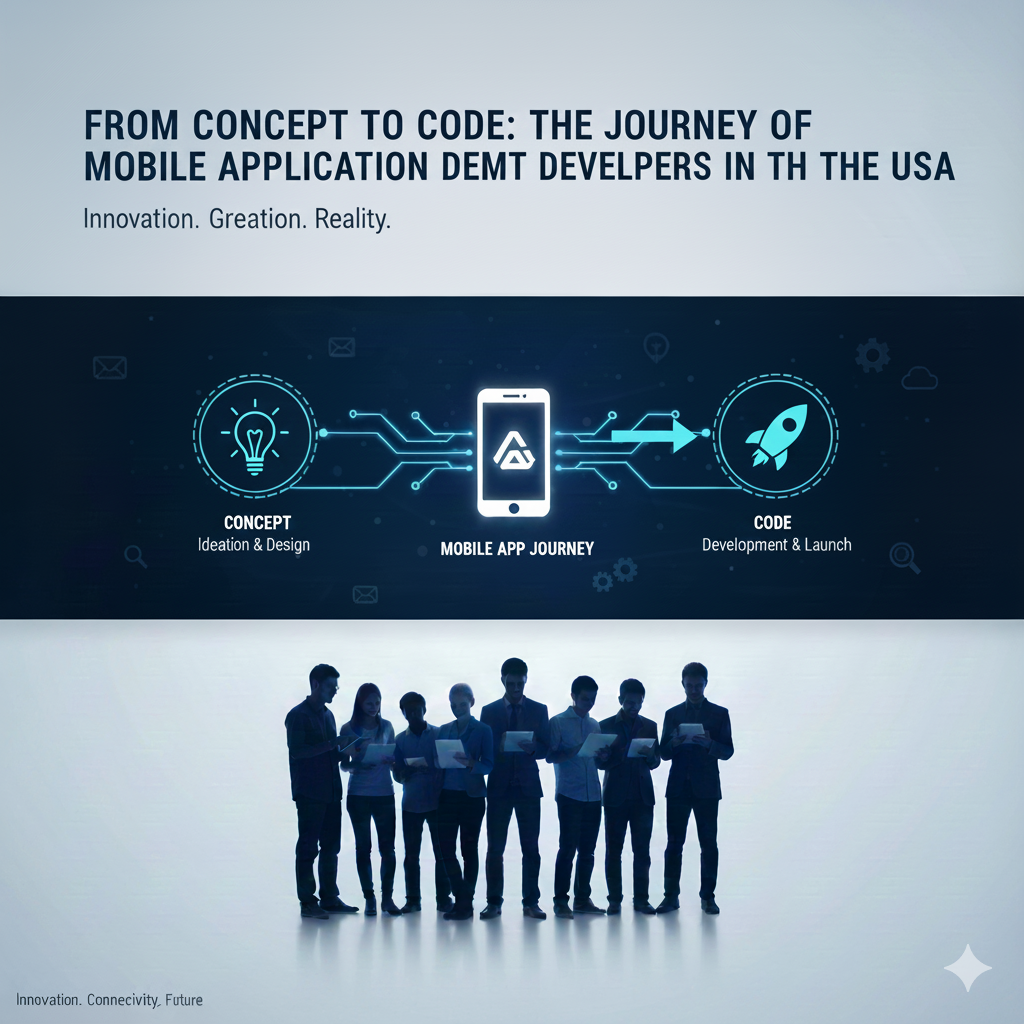In today’s fast-paced digital economy, mobile applications are more than a convenience—they are the backbone of business growth, customer engagement, and brand visibility. Across the United States, the demand for high-performance apps continues to rise, pushing developers and tech teams to innovate rapidly. The journey from a simple idea to a fully functional mobile app is a complex but exciting process. This blog explores how mobile application developers in the USA convert concepts into real, user-ready products that shape industries and redefine digital experiences.
1. Understanding the Vision: Turning an Idea Into a Plan
Every successful mobile app begins with a clear concept. Developers collaborate with founders, startups, and enterprises to understand the core purpose of the app. This includes identifying:
-
The target audience
-
The business goals
-
The problem the app will solve
-
Competitor landscape and market gaps
-
Desired features and functionality
At this stage, teams conduct deep market research using high-volume U.S. search trends, consumer behavior analysis, and industry insights. This helps ensure the idea aligns with real market needs. Businesses looking for a professional mobile app development company in USA often choose partners who specialize in research-driven planning to maximize the app’s market potential.
2. UX/UI Strategy: Where Creativity Meets Functionality
Once the concept is validated, the next phase is designing the user experience (UX) and user interface (UI). American users prioritize speed, simplicity, accessibility, and seamless navigation. Developers focus on building:
-
Clean interface layouts
-
Fast-loading screens
-
Intuitive user flows
-
Mobile-first responsive design
-
Accessible features for all users
Wireframes, prototypes, and interactive mockups help stakeholders visualize how the app will look and function. This stage ensures that the final product is user-friendly, modern, and aligned with U.S. usability standards.
3. Development: Writing the Code That Brings Ideas to Life
This is the heart of the journey—turning design into working code. Developers choose the right tech stack based on performance needs, budget, timeline, and platform. Common technologies include:
-
Swift and SwiftUI for iOS
-
Kotlin and Jetpack Compose for Android
-
React Native and Flutter for cross-platform apps
-
Node.js, Python, or Java for backend systems
-
Cloud platforms like AWS, Google Cloud, or Azure
During this stage, your mobile app development company ensures that every feature functions as intended, from authentication and database integration to push notifications and security.
Developers in the USA follow strict coding standards, focusing on scalability, performance, and security. Cybersecurity compliance—like data encryption and secure API communication—is a major priority, especially for industries like healthcare, fintech, and e-commerce.
4. Testing and Quality Assurance: Ensuring a Flawless Experience
Before any app reaches the public, it undergoes rigorous testing to identify and fix bugs. This includes:
-
Functional testing to verify that features work correctly
-
Performance testing to ensure speed and stability
-
Usability testing to measure user experience
-
Security testing to protect sensitive data
-
Device testing across multiple screen sizes and operating systems
Testers simulate real-world usage, ensuring the app performs seamlessly under different conditions. A reliable app development company uses automated and manual testing to guarantee a bug-free, market-ready product.
5. Deployment: Launching the App to the Market
Once the app is tested and approved, it is prepared for launch on platforms like the Apple App Store and Google Play Store. This process involves:
-
Preparing store listings
-
Uploading app builds
-
Meeting platform guidelines
-
Crafting compelling descriptions
-
Adding visuals like screenshots and promo graphics
App store optimization (ASO) is essential for visibility. Developers use high-volume U.S. keywords, user-centric descriptions, and eye-catching visuals to improve ranking and downloads.
6. Post-Launch Support: Growing and Optimizing the App
Launching the app is not the final step. Developers continue to improve the product through:
-
Regular updates
-
Security patches
-
Adding new features
-
Monitoring user analytics
-
Enhancing performance
User feedback plays a major role in shaping future updates. This ongoing collaboration helps businesses stay competitive in a rapidly evolving U.S. digital market.
Why the USA Leads in Mobile App Innovation
The United States is home to one of the world’s most advanced tech ecosystems. With Silicon Valley, major tech startups, and innovation hubs across cities like Austin, Seattle, and New York, the environment encourages cutting-edge development practices. Businesses prefer partnering with an experienced mobile app development company because they bring:
-
Advanced technical expertise
-
Strong project management
-
Market-driven strategies
-
High-quality engineering standards
-
Future-ready digital solutions
The result? Apps that are secure, scalable, and capable of supporting long-term business growth.
Final Thoughts
The journey from concept to code is a blend of strategy, creativity, and engineering. Mobile application developers in the USA play a critical role in transforming ideas into impactful digital products that shape industries and elevate brands. Whether you’re a startup or a growing enterprise, partnering with a trusted app development company ensures your vision becomes a powerful, user-centric mobile experience.
If you want, I can also create a short version of this blog, a keyword list, or a fully optimized guest-post version.




